How to Cat-Proof Your House: Tips for a Safe and Happy Living Space
Welcome to the adventurous world of sharing your living space with a feline friend! If you’ve ever had a cat leap onto your freshly cleaned kitchen counter or scratch up your favorite couch, you know that coexisting with these furry acrobats can be a wild ride. But fear not, dear cat owner! This comprehensive guide will help you cat-proof your house, turning it into a safe and fun haven for both you and your whiskered roommate. So, buckle up and get ready to discover how to create the purr-fect living space!
How to cat-proof your house?
To cat-proof your house, secure all hazardous items, protect furniture and surfaces, create cat-safe zones, and provide appropriate outlets for your cat’s natural behaviors. Ensure that your home is free of toxic plants, choking hazards, and potential fire risks, and consider investing in cat-proofing products to make the process even easier.
Want more in-depth information and expert tips on cat-proofing your home? Keep reading! This article is packed with practical methods and advice to help you create a harmonious living space for you and your feline companion.
We’ll cover everything you need to know about cat-proofing your home, from understanding your cat’s behavior and needs to securing every room in the house. We’ll even dive into some essential tools and products to make your life easier and ensure your cat’s safety. So, let’s get started and make sure your home is the purr-fect place for your feline family member!
Understanding Your Cat’s Behavior and Needs

To cat-proof your home, it’s important to first understand your cat’s behavior and needs. Cats, like humans, have their quirks and preferences, but a few common traits can help you anticipate their actions and create a safer environment for them.
“When I first adopted Bella, I didn’t realize how much of a climber she was. One day, I came home to find her precariously balanced on top of my bookshelf, knocking down all my prized collectibles. That’s when I knew I needed to cat-proof my home and give her a safer space to explore!”
– Layla, cat owner
How cats explore and play
Cats are naturally curious creatures, always on the lookout for new adventures and opportunities to explore. They love to climb, jump, and squeeze into tight spaces. You might find them perched on top of the fridge, hiding in a drawer, or even lounging in the bathroom sink! This innate curiosity and love for exploration can sometimes lead them into dangerous situations, such as chewing on electric cords or knocking over fragile items.
Playtime is also a crucial aspect of a cat’s daily routine. Cats are predators by nature, and their play behavior often mimics hunting. They enjoy stalking, pouncing, and batting at toys that resemble prey, like small stuffed animals, feather teasers, or laser pointers. But beware: cats are also experts at transforming everyday household items into toys, including rubber bands, hair ties, and even plastic bags. It’s important to keep these items out of reach to prevent accidents and choking hazards.
Identifying potential hazards
| Household Hazard | Cat-Proofing Solution |
|---|---|
| Electrical cords and cables | Use cord protectors, secure cables with cable ties |
| Toxic plants | Remove or replace with cat-safe plants |
| Unsecured shelves/bookcases | Anchor to wall, avoid placing breakables on top |
| Open windows without screens | Install sturdy window screens, limit window opening |
| Accessible cleaning chemicals | Store in locked cabinets or out of reach |
| Sharp objects (knives, tools) | Keep in drawers or covered containers |
| Unattended food | Store in sealed containers, clean up promptly |
| Accessible medications | Keep in locked cabinets, use childproof containers |
| Appliances (washer, dryer) | Always check inside before use, keep doors closed |
Think of your home as an obstacle course filled with potential hazards for your feline friend. To help you spot these dangers, try putting yourself in your cat’s shoes (or paws) for a moment. Get down to their level and take a good look around each room. Consider the following questions:
- Are there any breakable items within paw’s reach?
- Can your cat access cupboards containing cleaning supplies or medications?
- Are your electrical cords exposed and easily reachable?
- Do you have any houseplants that might be toxic to cats?
By identifying potential hazards in your home, you’ll be better equipped to address them and create a safer environment for your curious companion. Remember, when it comes to cat-proofing, a little bit of prevention can go a long way!
Cat-Proofing Your Living Spaces

Creating a safe and secure environment for your feline friend involves more than just hiding the breakables. It’s about adapting your living spaces to meet their needs while ensuring their safety. Let’s dive into some tips and tricks for cat-proofing different areas of your home.
Living Room
The living room is often the heart of a home and a favorite hangout spot for cats. To make it a safe and welcoming space, consider the following:
Cat-proofing furniture and decorations
As your cat’s personal jungle gym, your living room furniture should be sturdy and safe. Ensure shelves and bookcases are secured to the wall to prevent them from toppling over during a daring cat leap.
Additionally, think about using cat-friendly furniture covers to protect your sofas and chairs from scratches and fur. Invest in cat proof leather furniture or protective covers to keep your sofa and chairs scratch-free.
Look for cat claw proof furniture made from materials that can withstand your cat’s scratching habits. Choose cat proof furniture fabric, like microfiber or tightly woven materials, to minimize damage from scratching.
When it comes to decorations, avoid placing fragile or valuable items within your cat’s reach. You never know when your feline friend might decide to practice their high jump and send your favorite vase flying!
Cat-proof couches and window screens
To cat-proof your couch, consider investing in a cat-proof couch cover or using double-sided sticky tape to deter your cat from scratching. Don’t forget to provide them with a scratching post or pad as an alternative!
Window screens are another important aspect of cat-proofing your living room. Cats love to sunbathe and watch the world go by from a cozy window perch. Ensure your window screens are sturdy and secure to prevent any accidental falls. You might even consider installing cat-proof window screens for added peace of mind.
Bedroom and Home Office
The bedroom and home office can also present unique challenges when it comes to cat-proofing. Here are some tips to keep these spaces safe and functional:
Securing shelves and bookcases
Much like in the living room, it’s crucial to secure shelves and bookcases in the bedroom and home office. Cats love to climb, and a wobbly bookcase could spell disaster for both your cat and your belongings. Anchor these items to the wall using brackets or straps for added stability.
Safe storage for small items
Keep small items like jewelry, office supplies, and hair ties safely stored in closed containers or drawers. Cats are notorious for swiping these trinkets, which can pose choking hazards or cause blockages if swallowed.
Managing cords and cables: How to cat-proof wires
Cats can’t resist the allure of dangling cords and cables. To cat-proof your house, bundle cords together using cable ties or invest in cord protectors to prevent your cat from chewing on them. Learn how to cat proof wires by using cord protectors and cable management tools. Not only will this keep your cat safe, but it’ll also help you maintain a tidier workspace!
Cat-Proofing Your Kitchen and Dining Area

The kitchen and dining area can be a veritable playground for curious cats, but it’s also filled with potential dangers. Here are some ways to cat-proof your home in these spaces while keeping your feline friend’s mischievous nature in check.
Keeping cats off countertops and stoves
Ever walked into your kitchen only to find your cat lounging on the countertop, surrounded by breadcrumbs and that last slice of pizza you were saving for breakfast? It’s time to put an end to these countertop capers.
To deter your cat from jumping onto surfaces they shouldn’t, try placing aluminum foil, double-sided sticky tape, or plastic carpet runners (spike-side up) on countertops and stoves. These materials are uncomfortable for cats to walk on and should encourage them to find more appropriate lounging spots.
You can also try using motion-activated air sprays or a Ssscat training aid to startle your cat when they approach off-limits areas. They’ll quickly learn that the kitchen counter is a no-go zone! For more tips and tricks on keeping your feline friend off furniture and countertops, check out our comprehensive guide on how to keep cats off furniture and counters.
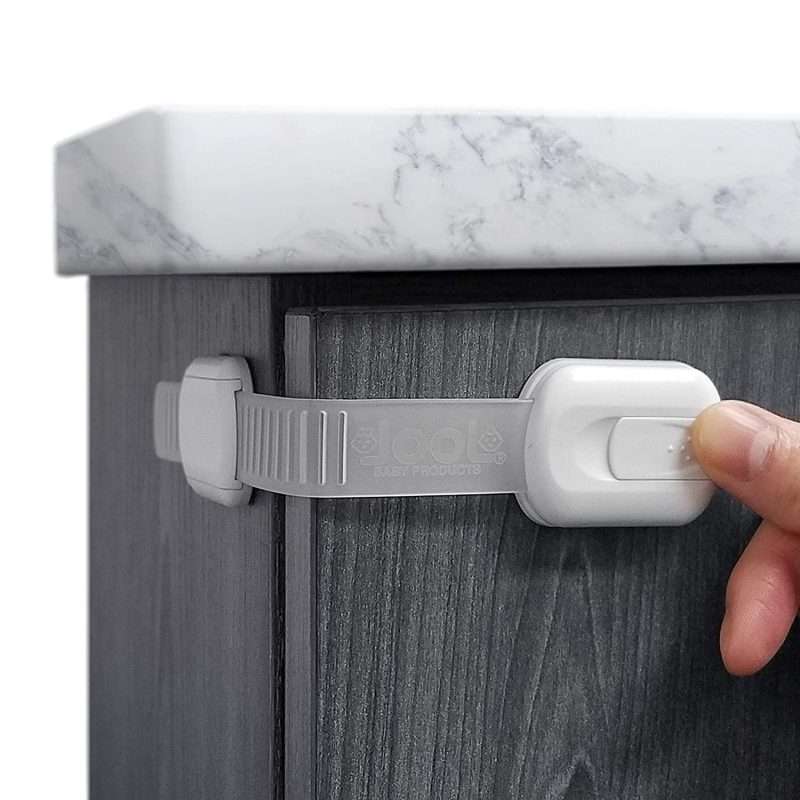
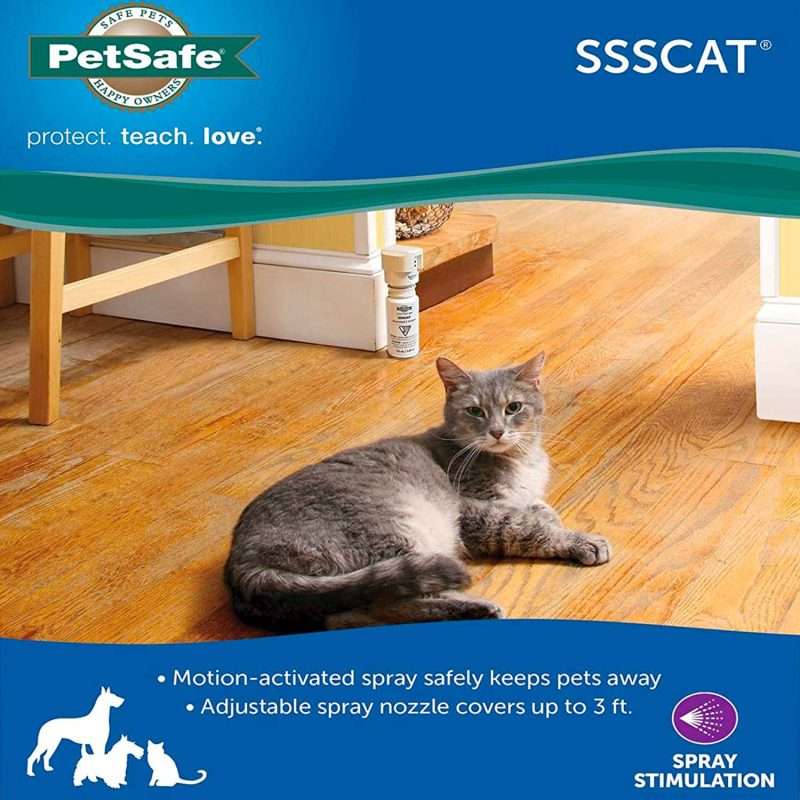

Securing cabinets and pantry
Curiosity may have killed the cat, but a well-secured cabinet can save it. Keep your feline friend out of harm’s way by installing childproof latches on cabinets and pantry doors. This will prevent your cat from accessing potentially dangerous items like cleaning supplies, medications, or that secret stash of chocolate chip cookies you’ve been hiding.
For added protection, store particularly hazardous materials in high or out-of-reach cabinets.
Safe storage of food and household chemicals
Cats are known to be finicky eaters, but sometimes they just can’t resist the temptation of human food. To cat-proof your house, store food items in airtight containers or sealed bags to keep those curious noses and paws at bay.
When it comes to household chemicals, it’s crucial to keep them locked away and out of reach. Many common cleaning supplies can be toxic to cats, so make sure they’re stored safely in a secure cabinet.
By implementing these simple tips, you’ll make your kitchen and dining area a safer, happier place for both you and your feline companion.
Cat-Proofing Your Bathroom and Laundry Room

Bathrooms and laundry rooms may seem like unlikely places for feline shenanigans, but trust me, cats can find trouble anywhere. Let’s dive into how you can cat-proof your house and make these spaces safer for your whiskered friend.
Toilet safety and medications
Have you ever caught your cat staring into the depths of the toilet bowl, pondering the meaning of life? Or worse, taking a sip from it? Gross! To prevent toilet-related mishaps (and to maintain some semblance of hygiene), always keep the toilet lid closed. Installing a toilet lock can add an extra layer of security.
Consider using a cat proof toilet paper holder to keep your cat from unrolling the entire roll. A cat proof toilet paper holder can help keep your bathroom mess-free and safe for your cat.

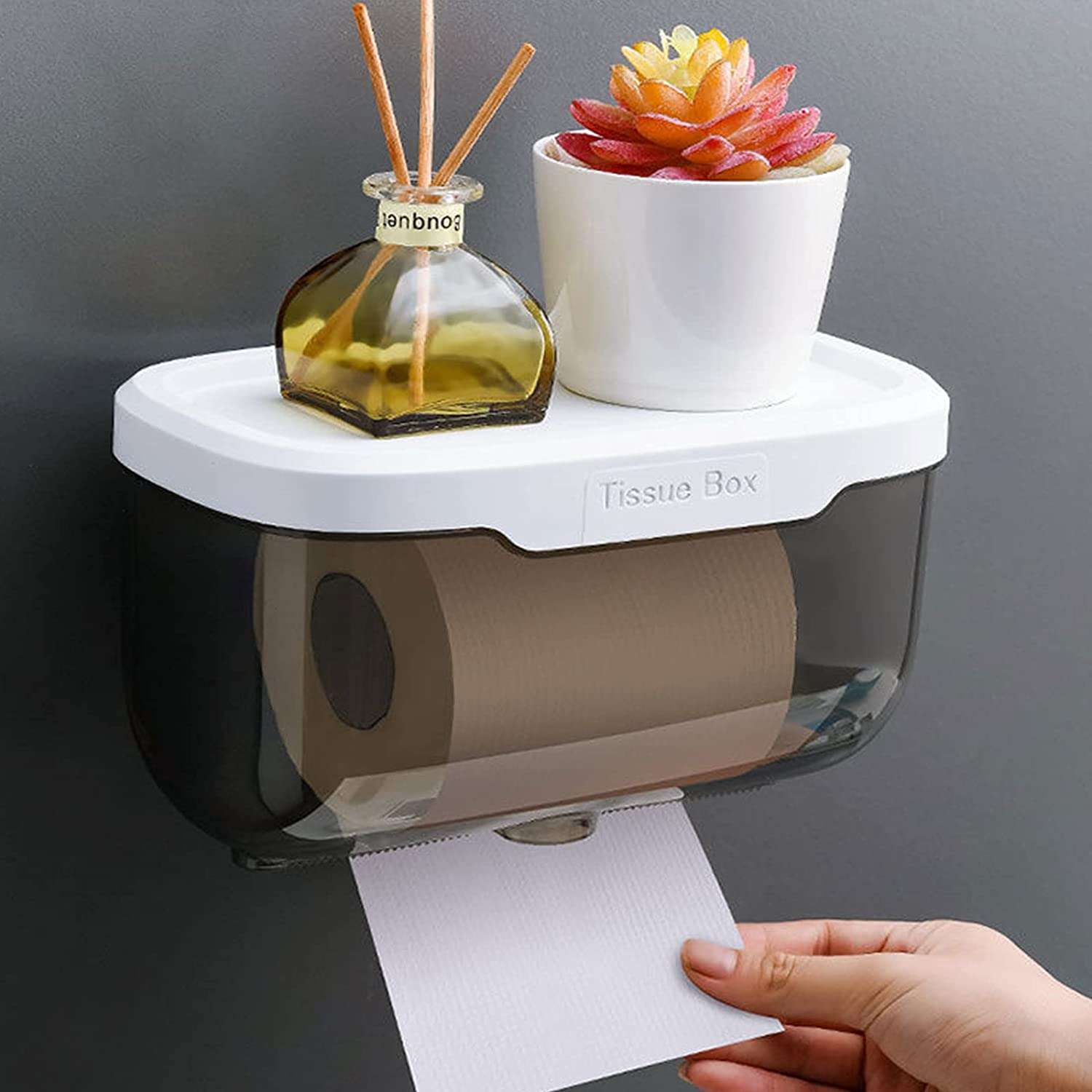
When it comes to medications, cats have a knack for finding and chewing on pill bottles. Store all medications in a secure cabinet or drawer, preferably one with a childproof latch. Your cat’s liver will thank you for it.
Appliance safety (washer, dryer, etc.)
Cats are drawn to warm, cozy spaces like moths to a flame, and the inside of a dryer may seem like the perfect nap spot. To cat-proof your home, always keep the doors of your washer, dryer, and other large appliances closed when they’re not in use.
Pro tip: put a sticky note or reminder on your washer and dryer to double-check for hidden feline friends before starting a cycle. Trust me, you don’t want to turn your beloved cat into a spin cycle survivor.
Additionally, secure any cords or hoses associated with your appliances to prevent curious kitties from chewing on them or getting tangled.
By following these simple tips, you can make your bathroom and laundry room a cat-proof sanctuary that both you and your feline companion can enjoy (although, let’s be honest, cats will probably still prefer the kitchen counter).
Outdoor Cat-Proofing
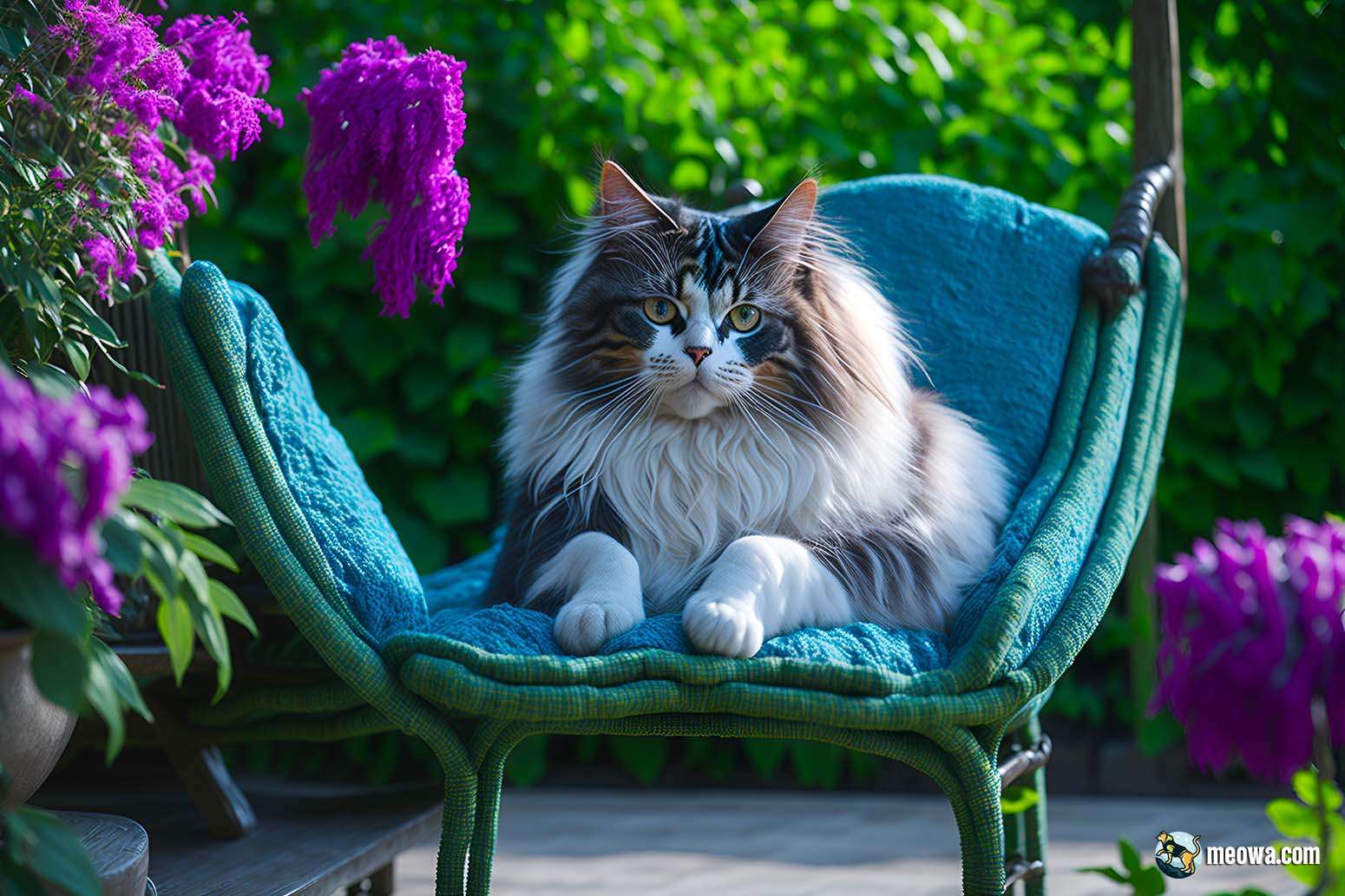
Outdoor spaces can be a cat’s playground, but they can also pose various dangers. To cat-proof your home’s exterior, let’s take a look at some measures you can implement to make sure your cat enjoys the great outdoors safely.
Balconies and Patios
Cat-proofing your balcony or patio is essential if you want your cat to enjoy some fresh air without the risk of falling or escaping.
Cat-proofing balcony railings
One way to cat-proof balcony railings is by using netting or mesh to create a barrier that prevents your cat from slipping through or jumping over. Make sure the material you choose is strong, UV-resistant, and properly secured to the railings. Alternatively, you can install plexiglass or polycarbonate panels to create a transparent barrier that won’t obstruct your view.
Enclosures and screens
A catio, or cat patio, is a fully enclosed outdoor space designed specifically for feline friends. Catios provide a secure environment where your cat can bask in the sun, watch birds, and sniff the fresh air. You can build one yourself or purchase a ready-made catio kit. Some catios even come with climbing shelves and tunnels for added entertainment.
Fences and Yards
Creating a cat-proof yard is a bit more challenging, but with some ingenuity, you can give your cat the freedom to explore while keeping them safe.
Cat-proofing fences and gates
To prevent your cat from climbing over fences, install fence toppers or roller bars. These devices make it difficult for your cat to gain traction and maintain balance on the fence, deterring them from attempting to escape. For added security, consider installing a self-closing and self-latching gate.
Keeping outdoor hazards at bay
A cat-proof yard means a yard free of potential hazards. Remove toxic plants, secure trash cans, and store chemicals, like antifreeze and pesticides, out of reach. Provide shelter and shade for your cat in case of extreme weather conditions. Make sure to regularly check for and remove any debris, broken glass, or sharp objects that might injure your cat.
By taking these steps to cat-proof your home’s outdoor spaces, you can create a safe haven where your cat can satisfy their curiosity and indulge their wild side while you enjoy some peace of mind.
Essential Cat-Proofing Tools and Products
Cat-proofing your home doesn’t have to be a complicated or expensive process. With the help of some handy tools and products, you can protect your furniture, windows, and other items from your curious feline companion. So, let’s explore some essential cat-proofing tools that will make your home a safe and enjoyable environment for both you and your cat.
Furniture covers and scratch deterrents


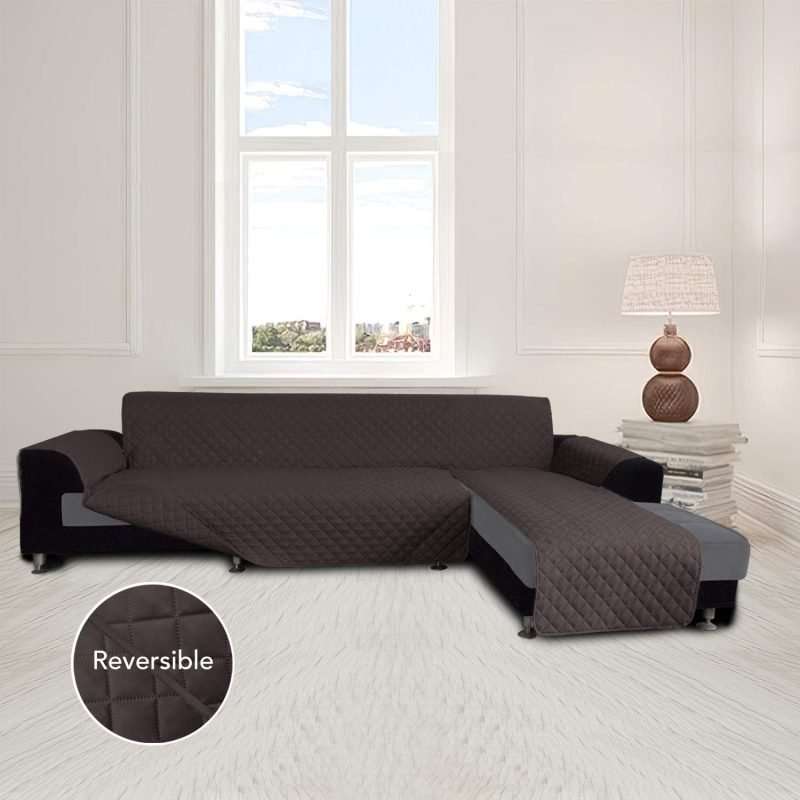
Cats have an innate need to scratch, but that doesn’t mean your furniture has to suffer. Furniture covers are a great way to protect your sofas, chairs, and other upholstered items from cat hair, claws, and the occasional hairball. Look for machine-washable, durable covers that fit snugly and can be easily removed for cleaning.
For added protection, consider using scratch deterrents. These products, such as double-sided sticky tape or plastic shields, can be applied to your furniture’s corners and other scratch-prone areas. They create an unpleasant texture that discourages your cat from scratching while being safe and non-damaging to your furniture.
Safe window screens and balcony enclosures
To cat-proof your windows, invest in sturdy, pet-resistant screens. These screens are made from strong materials like stainless steel or vinyl-coated polyester that can withstand your cat’s attempts to climb or scratch. Remember to secure the screens in place to prevent your cat from accidentally pushing them out.
For balcony enclosures, consider installing a catio or a cat-safe netting system. These enclosures allow your cat to enjoy the outdoors while keeping them secure and preventing them from falling or escaping.
Cord protectors and cable management


Keep your cat away from cords and cables by using cord protectors and cable management solutions. Cord protectors are plastic or rubber tubing that encase your cords, making them less attractive and less accessible to your cat. Some cord protectors even have a bitter taste to deter chewing.
For cable management, consider using cable ties, Velcro straps, or cable clips to bundle your cords and keep them neat and tidy. This not only helps reduce the risk of your cat chewing on cables, but it also makes your home look more organized and clutter-free.
With these essential cat-proofing tools and products in your arsenal, you’ll be well on your way to creating a home that’s both stylish and safe for your feline friend.
Creating a Cat-Safe Environment

Creating a cat-safe environment means going the extra mile to ensure your feline friend can roam, play, and relax without facing any dangers. After all, cats are curious creatures, and they have a knack for getting into trouble. So, let’s dive into some essential steps to cat-proof your house and make it a purr-fect haven for your beloved pet.
Creating a safe environment for your feline friend is crucial to their well-being. By cat-proofing your home, you’re not only preventing accidents but also promoting a harmonious relationship between you and your pet.
Identifying and removing toxic plants
Did you know that some common houseplants can be hazardous to your cat? It’s true! Cats love to nibble on plants, but some popular varieties, like lilies, philodendrons, and pothos, can be toxic and cause serious health issues. To create a cat-safe environment, go through your home and identify any potentially harmful plants. Replace them with cat-friendly options like spider plants, Boston ferns, or even a pot of cat grass. Not only will your cat thank you, but you’ll also score some bonus points as a green-thumbed pet parent.
Addressing potential fire hazards
When it comes to cat-proofing your home, fire safety is a hot topic (pun intended). Cats are curious and may accidentally knock over candles or come too close to open flames. To prevent any fiery mishaps, consider investing in flameless candles or LED lanterns for a warm and cozy ambiance without the risks. Also, make sure you have working smoke detectors in your home and a fire extinguisher nearby.
Another fire safety tip is to secure electrical cords and outlets. Use cord protectors and outlet covers to minimize the risk of electrical fires and protect your cat from potential shocks. Don’t forget to unplug appliances like curling irons or space heaters when they’re not in use.
Ensuring safe access to toys and play areas
A cat-safe environment should be full of fun and engaging play areas. However, it’s essential to choose the right toys and keep them in accessible, hazard-free zones. Avoid small toys that can be easily swallowed or broken, and regularly inspect your cat’s toys for signs of wear and tear. Replace any damaged toys to prevent your cat from choking on loose parts.
Designate specific play areas in your home, away from potential hazards like stairs or heavy furniture that could tip over. Consider investing in a cat tree or window perch to provide your cat with vertical spaces to explore and satisfy their natural climbing instincts. By creating a safe and stimulating environment, you’ll ensure your feline friend stays entertained, happy, and, most importantly, safe.
With these essential tips in mind, you’re well on your way to creating a cat-safe environment where your feline companion can thrive. Now, sit back and enjoy the peace of mind that comes with knowing your home is truly cat-proofed.
Tips for Kitten-Proofing Your Home
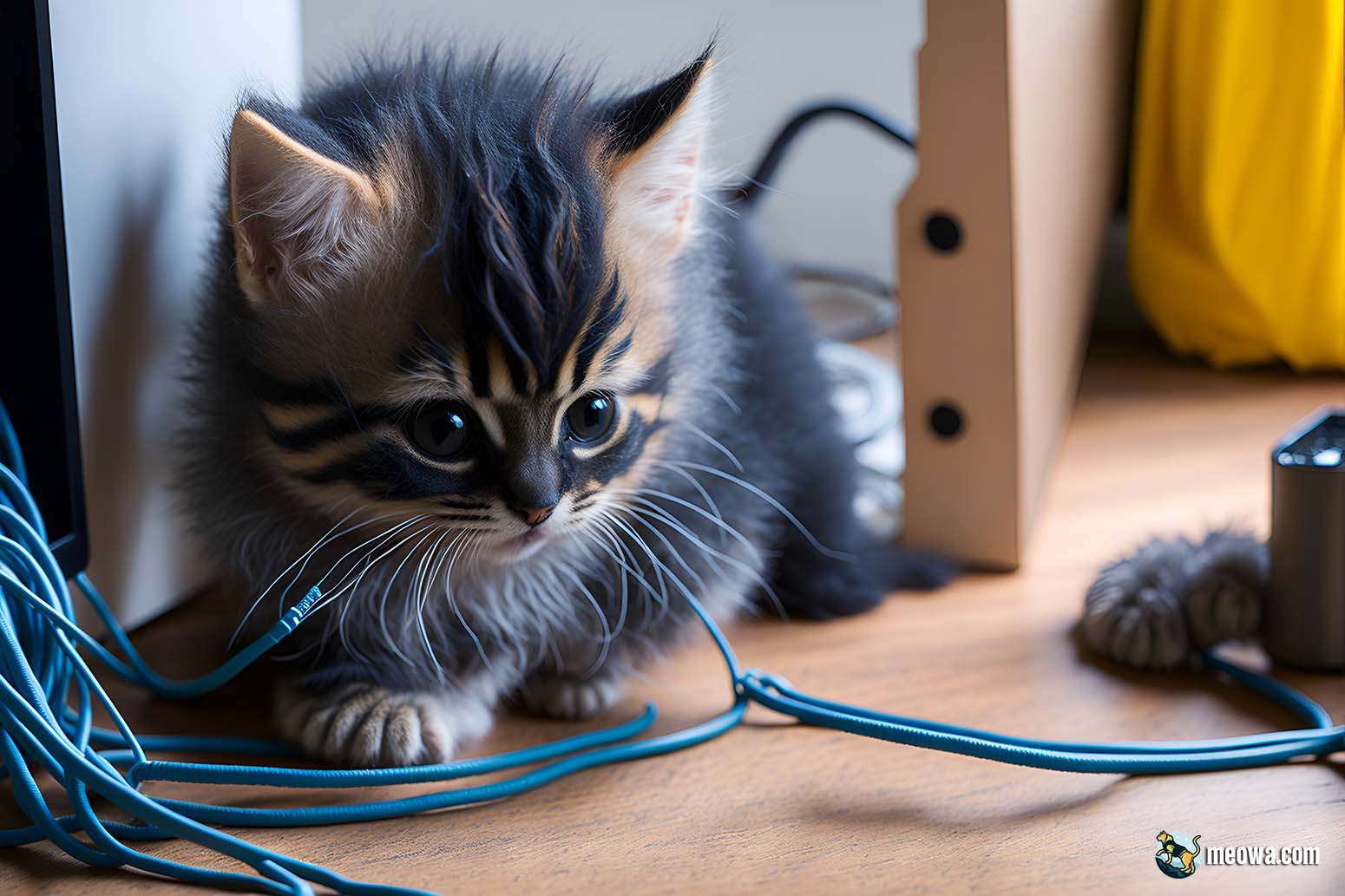
Kittens are the embodiment of curiosity, energy, and cuteness. They have an insatiable desire to explore every nook and cranny, making kitten-proofing your home an absolute necessity. It’s like having a tiny feline tornado in your living space! So, let’s discuss some extra precautions to take when kitten-proofing your home, ensuring your adorable little furball stays safe and sound.
Extra precautions for curious kittens
While many of the tips for cat-proofing your home also apply to kittens, these pint-sized feline explorers need some extra attention. Their small size and inexperience make them more susceptible to accidents, so it’s crucial to think like a kitten and identify potential dangers.
- Cover your home’s vents and air ducts. Curious kittens can squeeze into the smallest of spaces, making vents and air ducts potential hiding spots. Cover these areas with secure vent covers to prevent your kitten from getting lost or injured.
- Check for hidden spaces. Kittens love to explore, and that includes the insides of furniture, cabinets, and appliances. Make sure to close drawers, doors, and cabinets when not in use, and secure any gaps or spaces behind furniture.
- Remove choking hazards. While older cats might not be as tempted by small objects, kittens will chew on just about anything. Make sure to store small items like jewelry, buttons, and hair ties safely away from your furry little investigator.
Introducing your new kitten to their safe space
When you first bring your kitten home, it’s essential to introduce them to their new environment gradually. Too much stimulation can be overwhelming, so start by creating a smaller, kitten-proofed area where they can acclimate to their new surroundings.
- Set up a cozy, quiet space. Choose a room or area in your home that is quiet and free from hazards. Include a comfy bed, food and water dishes, a litter box, and some toys to help your kitten feel at home.
- Introduce your kitten slowly. Allow your kitten to explore this smaller space at their own pace. Once they become comfortable, gradually give them access to more areas of your home, always supervising them closely.
- Encourage safe exploration. Provide your kitten with opportunities to satisfy their curiosity in a controlled environment. Interactive toys, scratching posts, and climbing structures can keep your kitten entertained and help them develop good habits.
In conclusion, kitten-proofing your home requires a bit more attention and care than cat-proofing alone. By taking these extra precautions, you can create a safe and nurturing space for your furry little bundle of joy to grow and thrive. Before you know it, you’ll have a well-adjusted, confident cat who knows the ins and outs of their cat-proofed kingdom.
Dealing with Common Cat-Related Problems
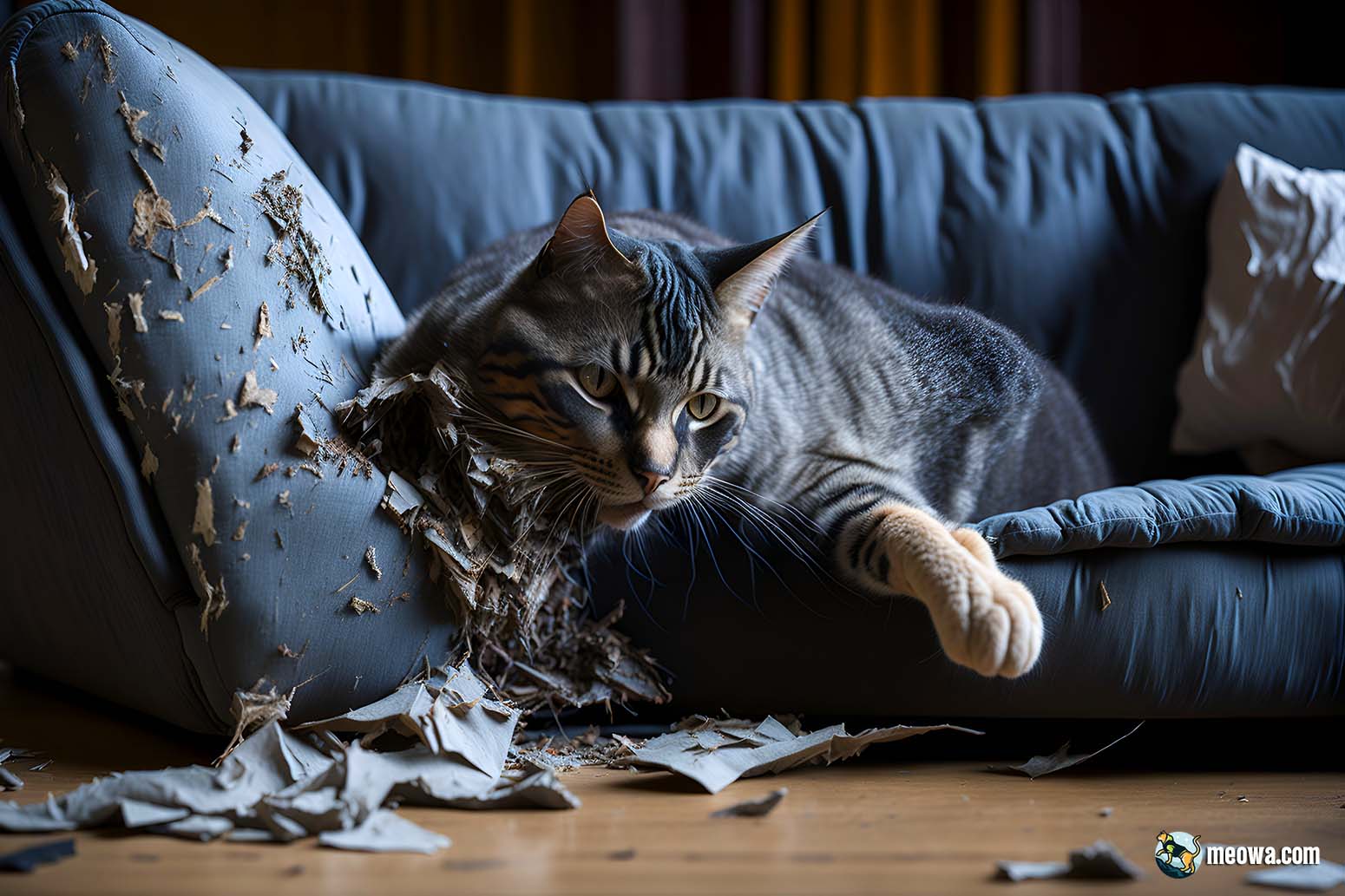
Cats may be adorable, fluffy creatures, but they can also be the masters of mischief. It’s not uncommon for cat owners to deal with destructive scratching, chewing on wires, or feline trespassers in off-limits areas. Don’t worry, though; with some patience, understanding, and the right strategies, you can tackle these common cat-related problems head-on.
Preventing and addressing destructive scratching
Cats scratch for various reasons, like marking their territory, maintaining their claws, or simply stretching. Unfortunately, they don’t always choose the most appropriate surfaces (like your favorite couch). Here are some tips for providing appropriate scratching surfaces and redirecting their behavior.
Providing appropriate scratching surfaces
- Offer a variety of scratching posts and pads. Cats have their own preferences when it comes to materials and angles, so try offering a mix of sisal, carpet, and cardboard scratching surfaces in both vertical and horizontal orientations.
- Make the scratching posts more appealing. To entice your cat to use the scratching posts, sprinkle some catnip or attach a toy to the post. You could also try placing the post near their favorite lounging spots.
Training tips for redirecting scratching behavior
- Catch them in the act. When you see your cat scratching an inappropriate surface, calmly interrupt them and redirect them to the designated scratching post.
- Praise and reward. Positive reinforcement goes a long way with cats. When your cat uses the appropriate scratching surface, praise them and offer a treat as a reward.
- Temporarily cover the scratched surfaces. If your cat keeps returning to a specific spot, cover it with double-sided tape or aluminum foil to deter them. These textures are unappealing to cats and will encourage them to find a more suitable scratching surface.
Cat chewing on wires
Cats might chew on wires for various reasons, like teething, boredom, or anxiety. Not only is this behavior destructive, but it can also be dangerous. Here’s how to protect your cords and offer safe alternatives.
Sarah, a first-time cat owner, had struggled with her cat, Gizmo, constantly chewing on electrical cords. After investing in cord protectors and providing Whiskers with appropriate chewing alternatives, she noticed a significant improvement in his behavior, and the risk of accidents dramatically decreased.
Protecting cords and wires
- Use cord protectors. Invest in some cord protectors or cable organizers to keep your wires out of reach and prevent your cat from chewing on them.
- Hide cords behind furniture. Cats are less likely to chew on cords if they’re out of sight. Tuck wires behind furniture or use cable clips to secure them to the wall.
Safe alternatives for chewing
- Provide appropriate chew toys. Offer your cat safe chewing alternatives, like rubber chew toys or dental chews specifically designed for cats.
- Offer interactive playtime. Engaging your cat in interactive play can help distract them from chewing on wires. Use toys like feather wands, laser pointers, or motorized mice to keep them entertained and mentally stimulated.
Keeping cats in designated areas of your home
Some areas of your home might not be cat-friendly, so it’s essential to set boundaries and create designated cat zones.
Setting boundaries and using deterrents
- Install baby gates or pet barriers. These can help keep your cat contained in specific areas of your home.
- Use deterrent sprays. Some cats dislike the smell of citrus or certain essential oils. Use a spray containing these scents on the surfaces or areas you want your cat to avoid.
Creating cat-friendly zones
- Establish a designated “cat room”. Dedicate a room in your home to your cat, complete with a cozy bed, toys, scratching posts, and other amenities.
- Create vertical space. Cats love to climb and perch. Install cat shelves, window perches, cat trees, or wall-mounted cat furniture to give your feline friend plenty of options for exploration and relaxation within their designated zone.
- Keep your cat’s belongings in their designated area. Maintain consistency by keeping your cat’s food, water, litter box, and toys in their designated space. This will help reinforce the idea that this area is meant for them.
- Provide stimulation in the cat-friendly zones. To keep your cat entertained and content in their designated area, offer a variety of toys, such as puzzle feeders, interactive toys, and enrichment items like bird feeders outside the window.
By addressing common cat-related problems, using the tips mentioned above, and employing a healthy dose of patience, you can create a harmonious living environment that caters to both your needs and your furry friend’s. With these strategies in place, you’ll be well on your way to a safe, happy, and cat-proof home!
Making Your Home Enriching for Your Cat

Creating a stimulating environment for your cat is just as important as cat-proofing your home. A happy, engaged cat is less likely to cause mischief or engage in destructive behaviors. To transform your home into a feline paradise, consider incorporating the following ideas:
Interactive toys and puzzle feeders
Cats are natural hunters, so it’s essential to keep their minds and bodies active. Interactive toys and puzzle feeders are a fantastic way to engage your cat’s predatory instincts and keep them entertained for hours. These toys often require your cat to use their problem-solving skills to release treats or small toys hidden inside. Plus, they’re a great way to keep your kitty’s waistline in check!
You can also try out some quirky, mouse-shaped puzzle feeders that will have your cat pouncing and swatting in no time. You can also DIY your own puzzle feeders using empty toilet paper rolls or cardboard boxes, adding a personal touch to your cat’s playtime.
Cat trees, perches, and window seats
Cats have an innate desire to climb and observe their surroundings from up high. By providing cat trees, perches, and cat window seats, you’re not only fulfilling their natural instincts but also creating a safe haven for them to relax and observe the world.
Imagine your cat’s delight as they lounge on their very own window seat, basking in the sun and bird-watching. Throw in a cozy blanket, and you’ve got yourself the purr-fect feline chill-out spot. Don’t forget to scatter a few strategically placed bird feeders outside the window to turn your cat’s relaxation station into a feline cinema!
Encouraging healthy play and exercise
A bored cat can quickly become a destructive one. Encourage your cat to engage in healthy play and exercise to keep them happy and occupied. Invest in a variety of toys, such as laser pointers, feather wands, or even crinkly balls to keep your feline friend on their toes (or paws!).
Get creative with your play sessions, turning your living room into an obstacle course with cardboard boxes and paper bags, or engaging your cat’s inner acrobat by dangling their favorite toy from a door frame. Remember, the key to a happy cat is a healthy balance between relaxation and play.
By incorporating these enriching elements into your home, you’ll not only cat-proof your house but also create a stimulating and enjoyable environment for your feline friend. From interactive toys and puzzle feeders to cozy perches and window seats, there’s no shortage of ways to make your home a cat’s paradise. With a little creativity and effort, you’ll have a happy, content kitty that’s less likely to engage in destructive behaviors or cause mischief. So go on, spoil your furball and make your home their very own playground!
Conclusion
Well, furriends, we’ve reached the end of our cat-proofing journey! We’ve covered a lot of ground to ensure that your home is both a safe haven and a fun playground for your feline companion. Let’s take a moment to recap the key cat-proofing tips we’ve discussed:
- Understand your cat’s behavior and needs to tailor your cat-proofing efforts.
- Secure your living spaces, including the living room, bedroom, home office, kitchen, dining area, bathroom, and laundry room.
- Pay extra attention to outdoor cat-proofing for balconies, patios, fences, and yards.
- Invest in essential cat-proofing tools and products to make the process easier and more effective.
- Create a cat-safe environment by removing toxic plants, addressing potential fire hazards, and ensuring safe access to toys and play areas.
- Take special care when kitten-proofing your home, as these little bundles of energy require extra precautions.
- Deal with common cat-related problems, such as destructive scratching, chewing on wires, and setting boundaries within your home.
- Make your home an enriching space for your cat with interactive toys, cat trees, perches, window seats, and encouraging healthy play and exercise.
Armed with these tips, you’re now ready to cat-proof your home and create a happy, safe living space for both you and your feline friend. Remember, our whiskered pals are curious and adventurous creatures, so it’s essential to stay vigilant and continually adapt your cat-proofing efforts as needed.
So go on, put your new cat-proofing knowledge to good use and create the purr-fect sanctuary for your furry companion. They’ll be forever grateful, and you’ll have peace of mind knowing that your home is safe and secure. And when you’re done, don’t forget to check out more content on our blog for additional tips and tricks to keep your feline friend purring with delight!

